After playing around with email formatting, I decided to touch on Spreadsheets but it is quite a challenge because I don’t really know how to play with it as my previous sketch for email formatting is a way for users to receive the email in a way where the text is interactive but I can’t think for Spreadsheets because you have to create a template for users to use..
So my friend, Vio, told me about this designer who does design works on Spreadsheets and her name is Kwon Suzin. She uses excel sheets in a manner where its not meant for usual things, if I am not wrong, she host workshops for creating/designing with excel sheets and one of the participants uses the excel sheets in a creative way by laying out poem links.
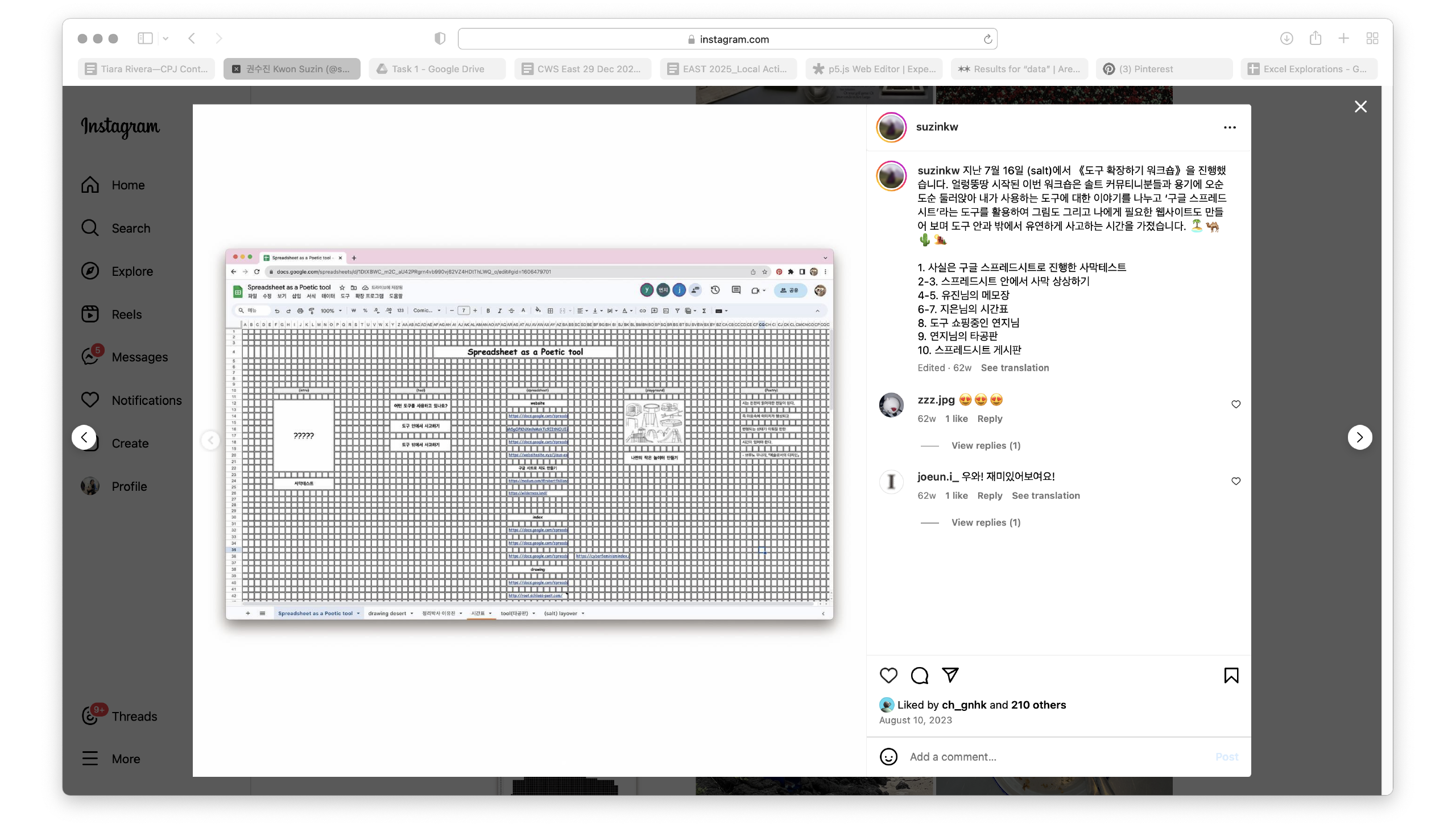
I’ve been reflecting on how some designers manage to push boundaries using tools in ways I would never have thought of. One example that stands out is how Kwon uses Excel sheets—not for numbers, but for creating irregular grids and modular typefaces. It’s such a simple tool, yet the way she creates these uneven grids and fills them with color to design posters makes the whole thing feel so unexpected and fresh.
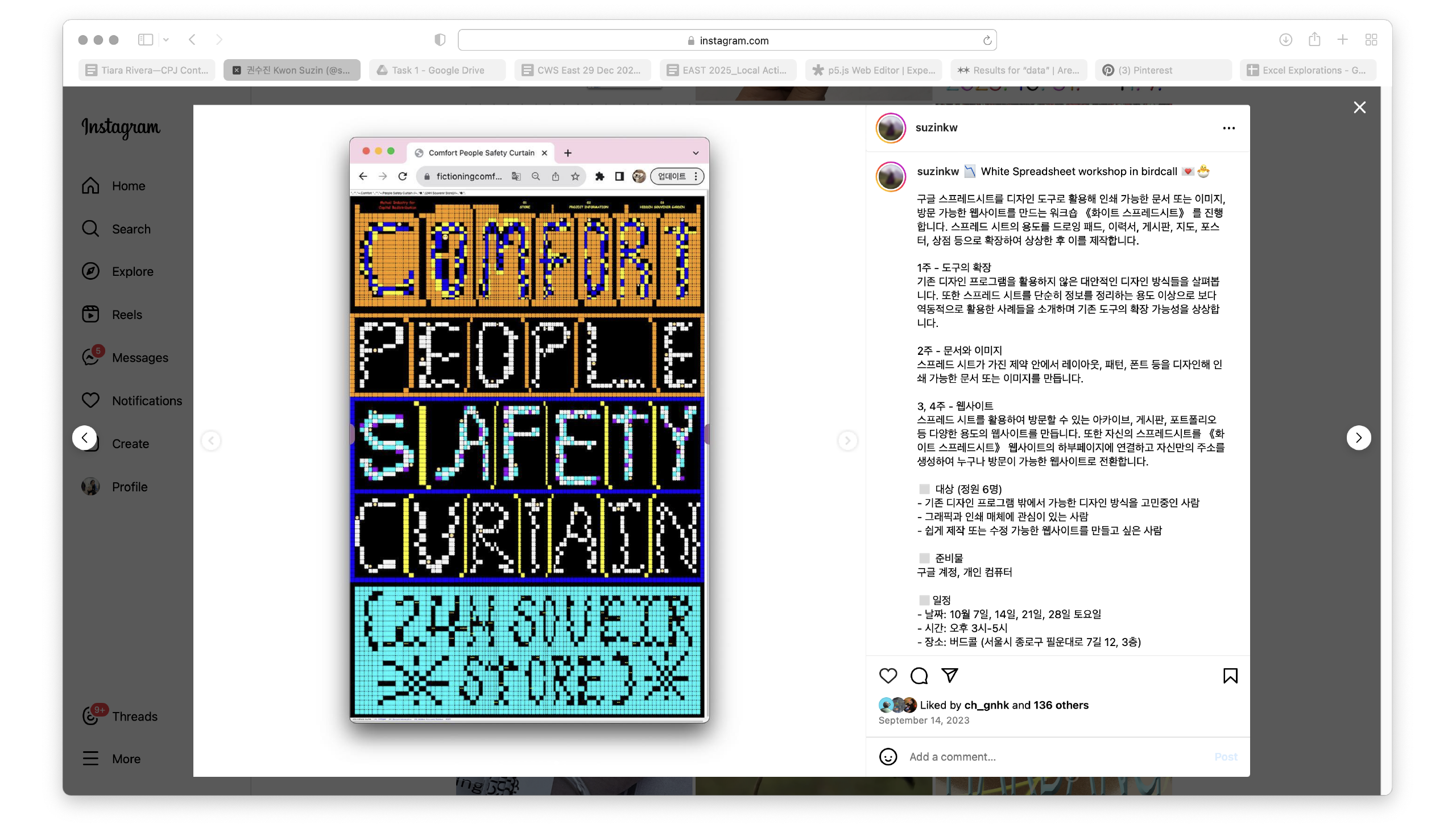
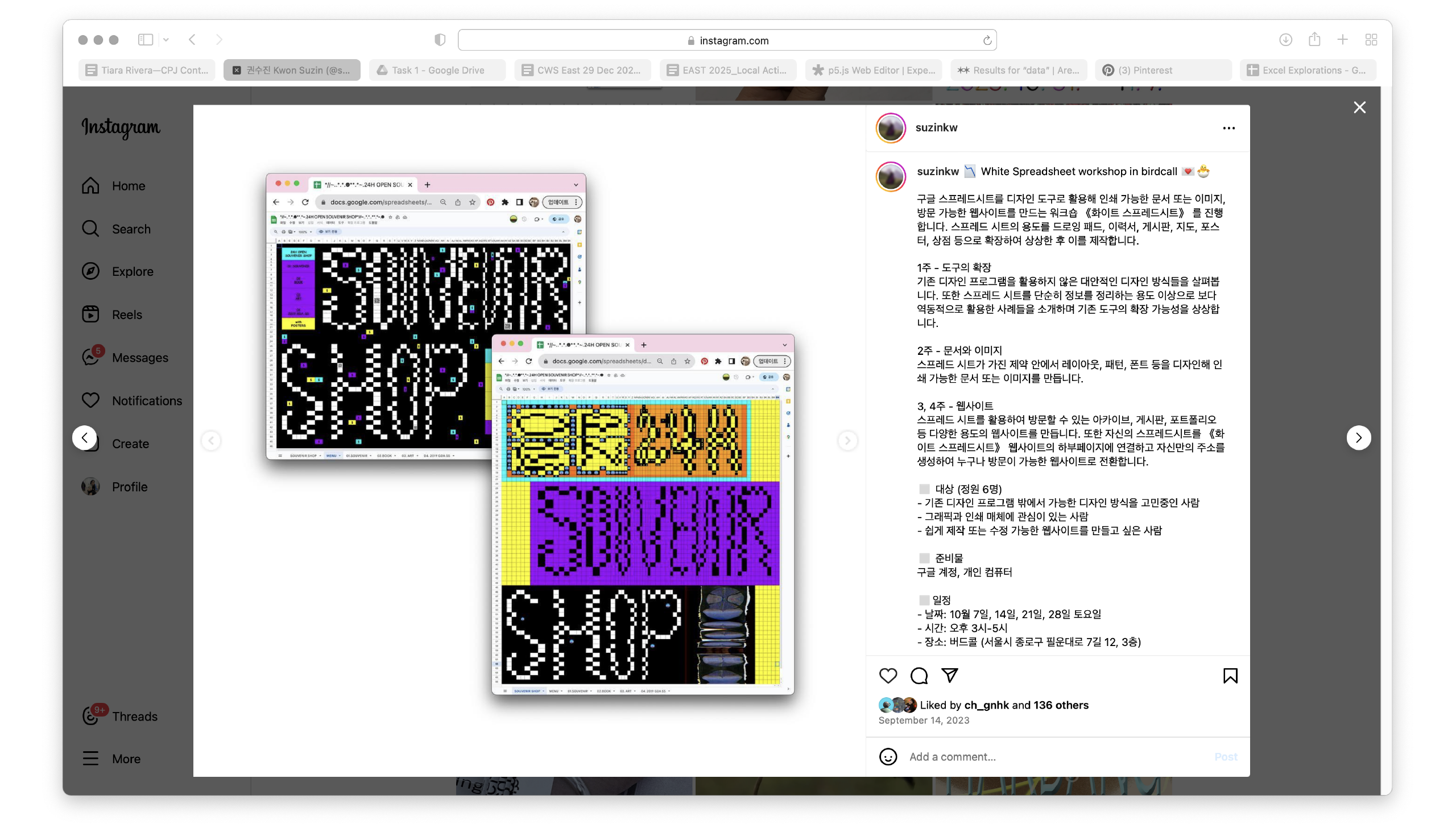
It’s interesting because Excel isn’t something I’d typically associate with creative design, but seeing how it’s turned into this playful toolbox really makes me think differently about how I approach tools. It’s a reminder that creativity isn’t always about having the fanciest software—it’s about how you use what’s in front of you.
Vio also gave me some slides that Gideon talked about last semester when I was in exchange. One of the interesting part of the slides was how Gideon(?) uses InDesign Glitches and create designs that are unusual yet has an interesting look. He adds “Unexpected encounters, errors, or mistakes as opportunities for making ‘work’” Which is an interesting take for this task.
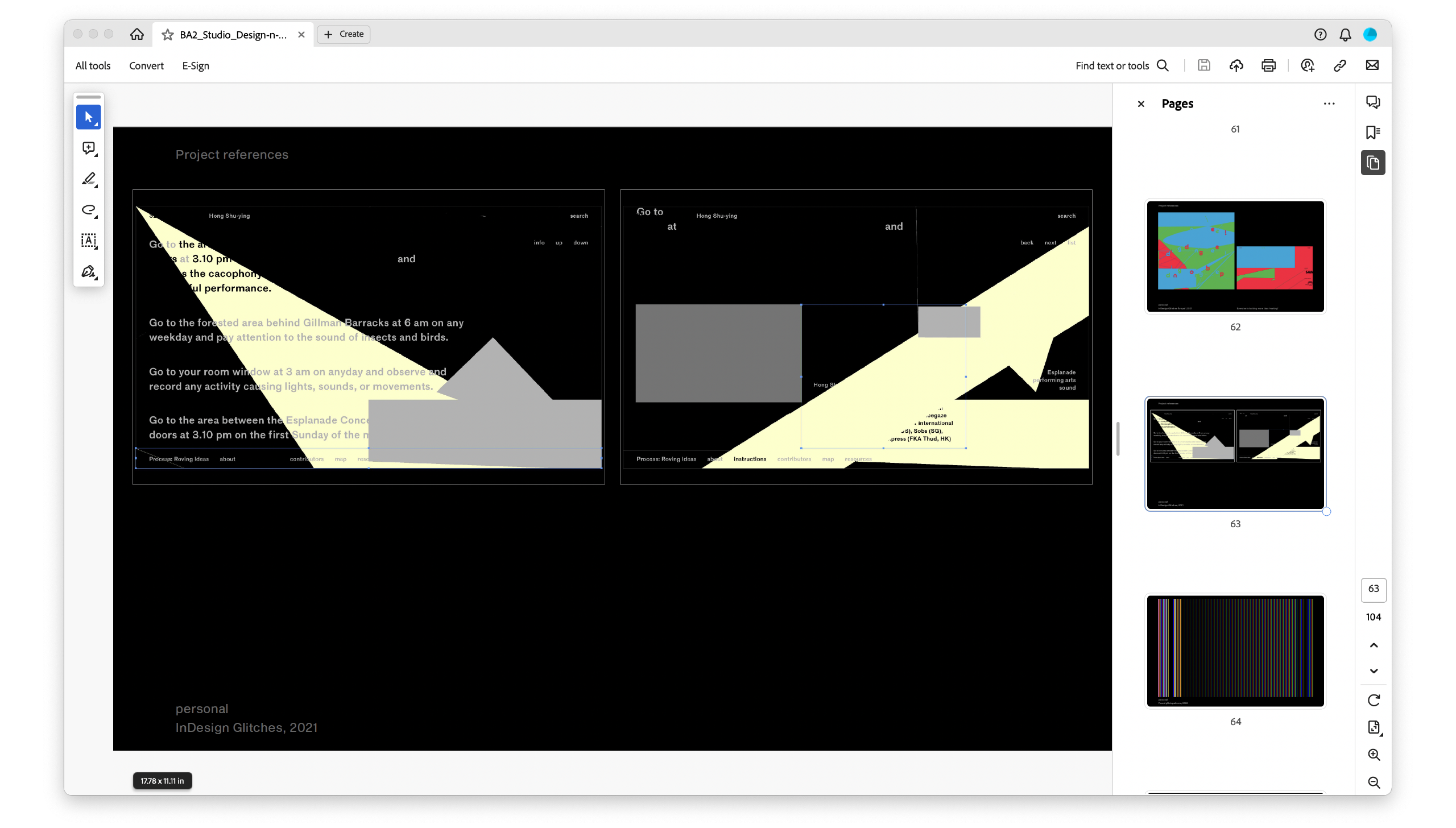
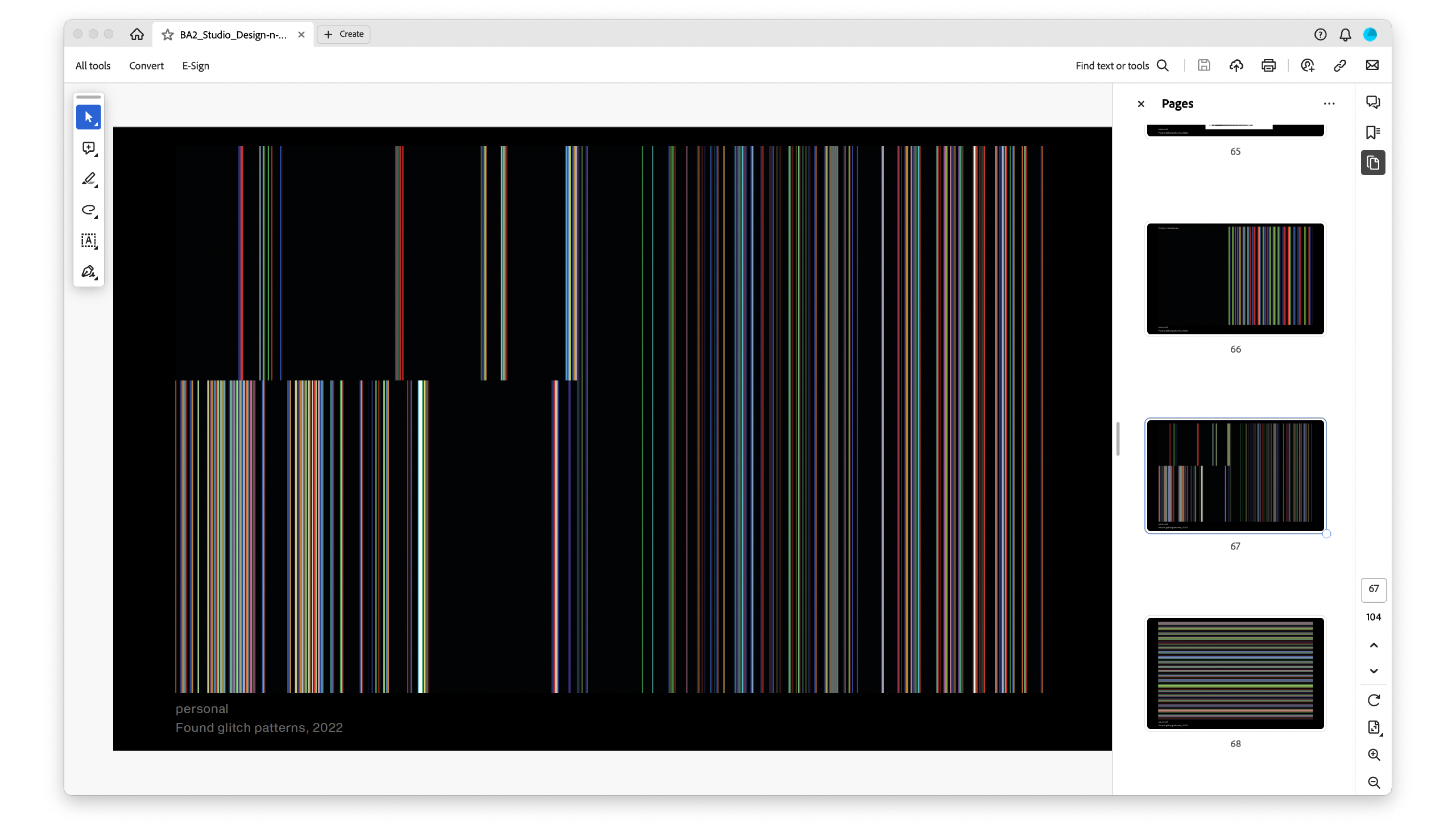
Gideon’s approach to design really got me thinking. The idea of embracing mistakes or glitches in InDesign as part of the creative process is pretty intriguing. It’s almost like he’s saying that accidents—things we usually try to avoid—can actually lead to more interesting, unexpected results. I kind of love that idea, especially for this task. It makes me reflect on how often I’ve probably dismissed something just because it didn’t go as planned. What if instead of seeing these errors as setbacks, I started viewing them as opportunities? The thought of intentionally working with these “mistakes” to create something unique feels freeing. It’s a different mindset, and it makes me want to push boundaries more in my work—like, what if those imperfections are what actually make the design stand out?
I started by breaking the ice with Excel sheets since I’m not a typical user. I played around with the blocks and grids to get comfortable, which felt like a simple warm-up before diving deeper. But as I tried to come up with something, I realized I was stuck. I kept circling back to my earlier sketch, where my focus was all about how the user should receive it. That mindset made it tough to think beyond the rules I’d set for myself.
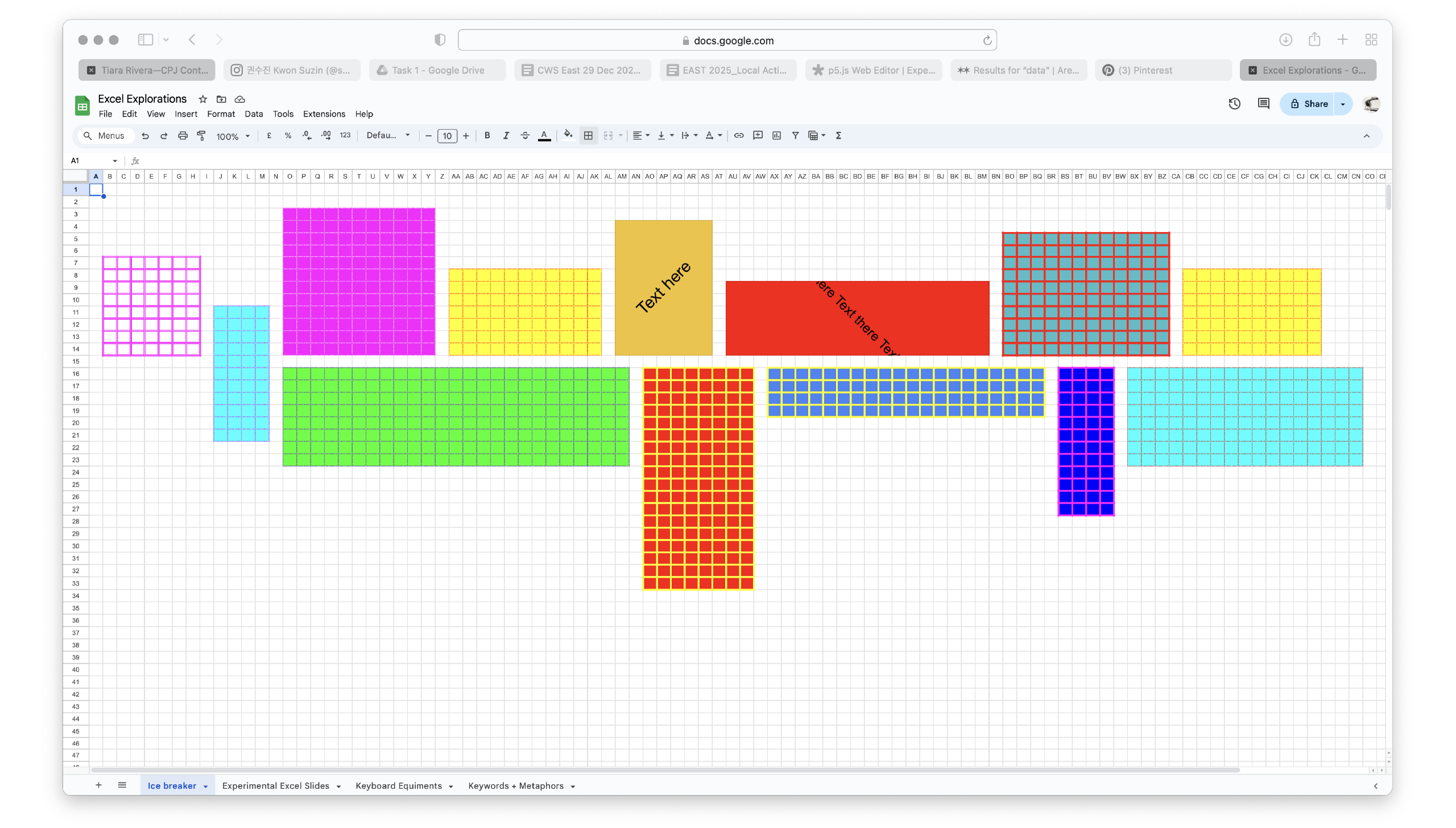
Then, I stumbled upon an interesting idea—using the spreadsheet as a medium for presentation slides. It got me thinking, though I didn’t have a solid direction just yet. As I scrolled through Kwon Suzin’s profile, I saw her breakdown of a step-by-step workshop, and what really stood out was her approach. She had participants start with paper, brainstorming unique ways to use the spreadsheet before transferring their ideas. It clicked for me because that’s exactly how I started, too.
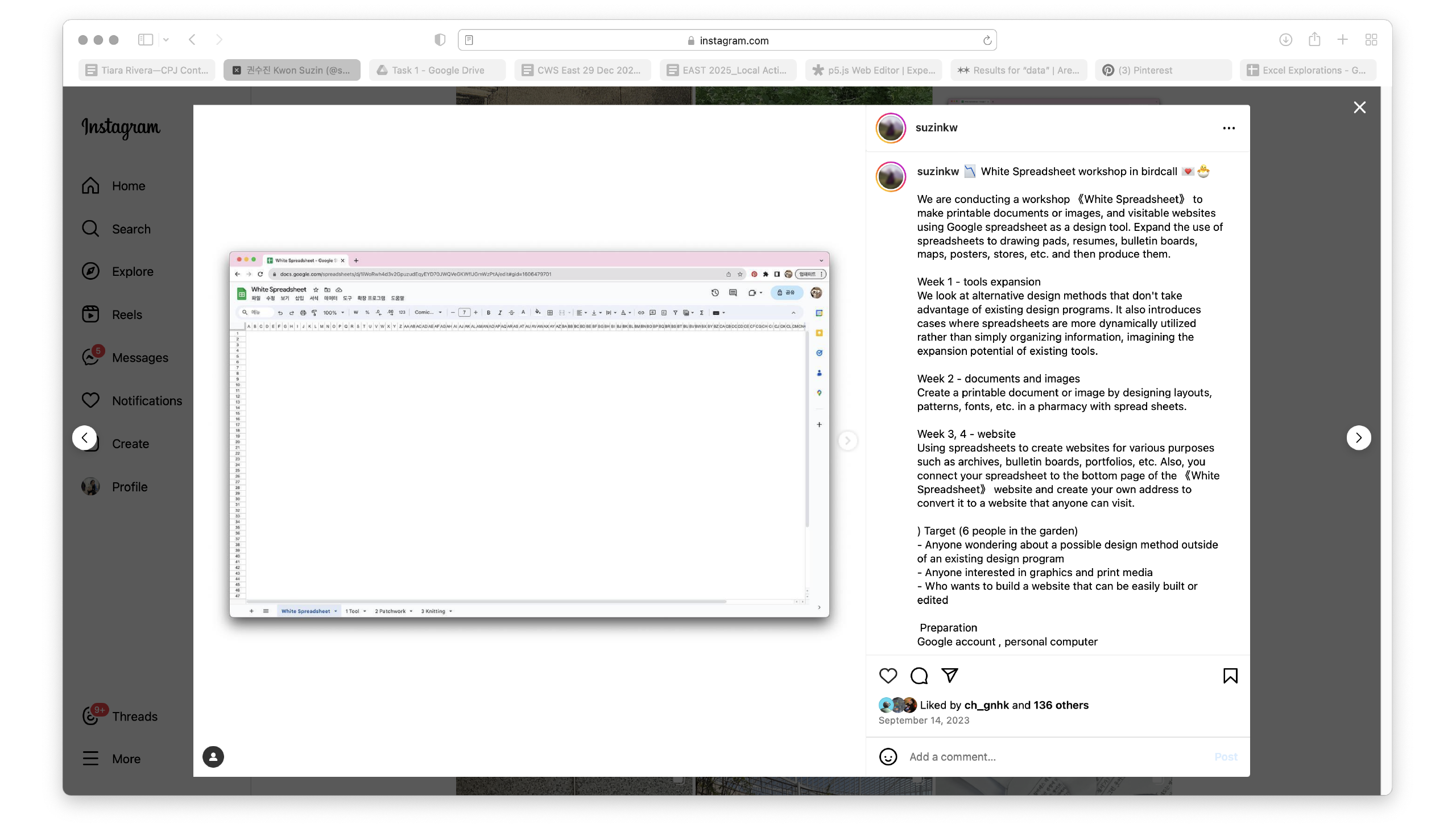
What was interesting is that she made the participants to write on paper first and think of unique ways to use the excel sheet and transfer the idea to the spreadsheet—which was how I started. Reflecting on my past tasks, I began questioning if I’m building toward something tangible or just moving aimlessly. It’s hard to describe, but there’s a flow to my work, though not a clear, linear one. That realization made me decide to approach my tasks with more intention, having a flow and plan that leads naturally to the next step.
With my current exploration of spreadsheets, I’ve been compiling all the keyboard essentials and linking them to explanations, so I can get a deeper understanding of what’s needed to build a keyboard. This will eventually help me transition into my analog tasks, which I’m excited to explore further.
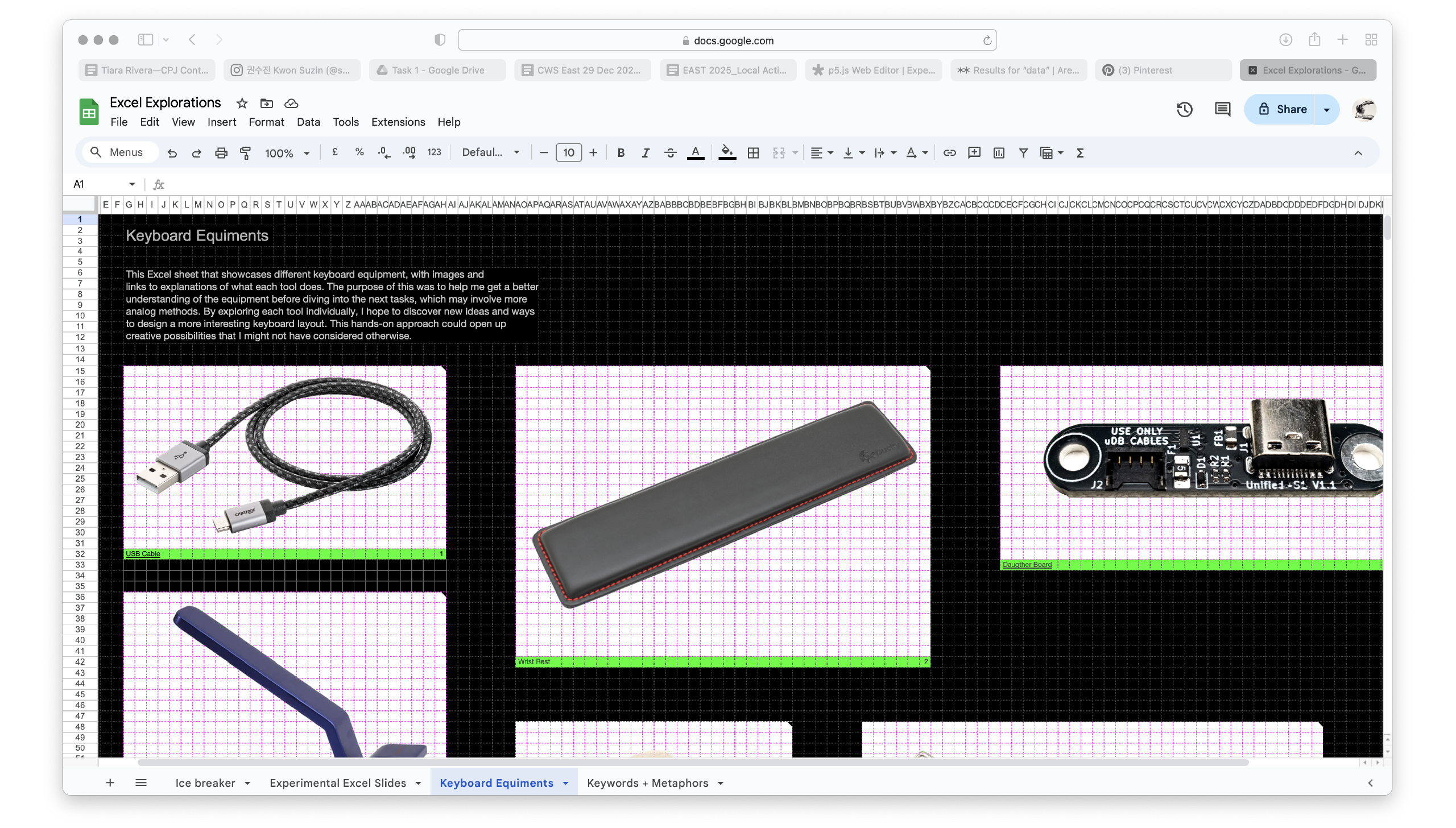
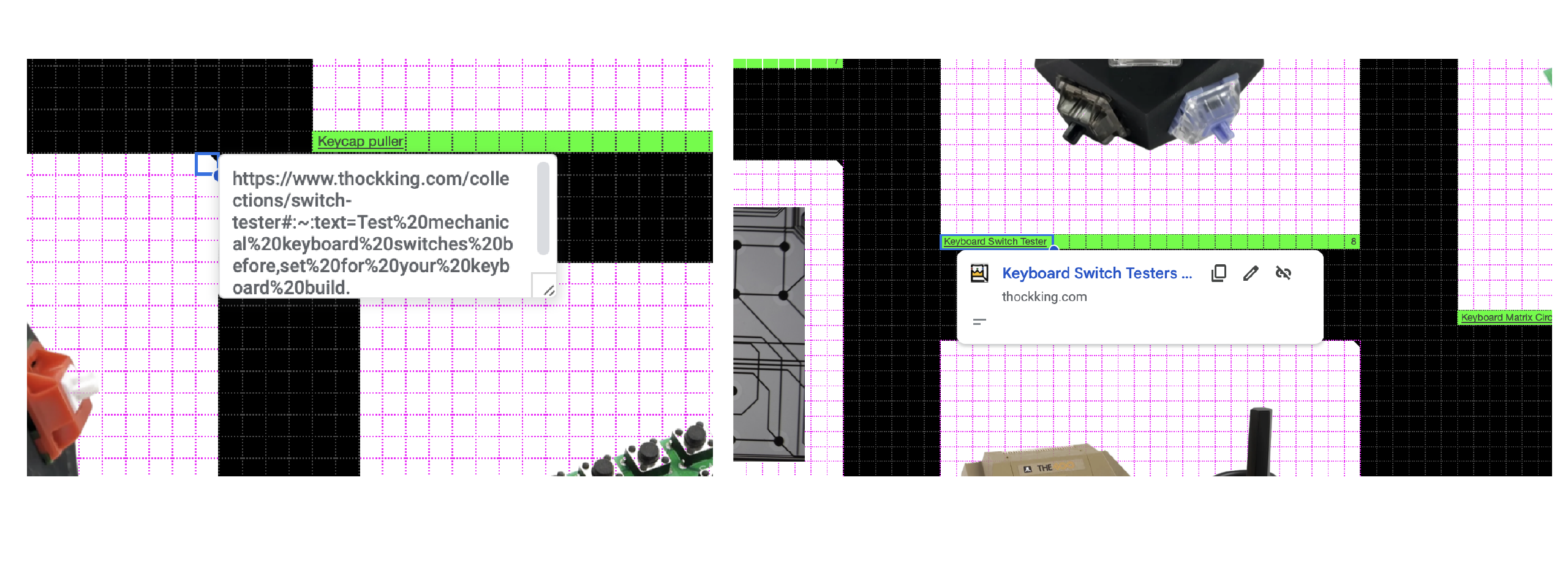
Moving forward, I plan to create an Excel sheet full of metaphors and keywords connected to images and explanations. I think this will give me a better sense of direction and help guide my next steps as I transition into the analog phase of the project.
